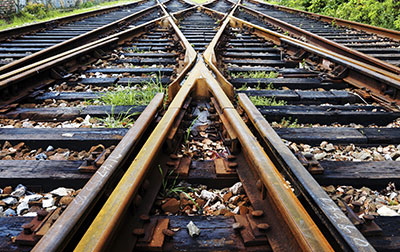Tackling stray current corrosion in light rail systems
 Stray currents in LRT systems occur when electrical current deviates from its intended path through the running rails and leaks into the surrounding soil and infrastructure. This leakage, even in small amounts, can cause rapid corrosion and compromise the integrity of the rails and nearby structures, including underground pipelines, cables, and reinforced concrete. Overall, the impact of stray current corrosion can be substantial, leading to significant steel loss over time.
Stray currents in LRT systems occur when electrical current deviates from its intended path through the running rails and leaks into the surrounding soil and infrastructure. This leakage, even in small amounts, can cause rapid corrosion and compromise the integrity of the rails and nearby structures, including underground pipelines, cables, and reinforced concrete. Overall, the impact of stray current corrosion can be substantial, leading to significant steel loss over time.
Monitoring and mitigating
Transit authorities can effectively mitigate these risks through monitoring, innovative technologies, and strategic maintenance practices. Doing so can safeguard vital assets, extend infrastructure lifespan, reduce operational costs, and ensure the long-term reliability and safety of their transit systems.
These strategies can include:
- Conducting regular assessments: Implementing routine track evaluations to identify potential risks before they escalate.
- Regulating rail insulation: Maintaining electrical insulation between rails and soil to minimize current leakage.
- Applying cathodic protection: Adding protective systems to vulnerable underground structures to neutralize corrosive effects.
Additionally, operators often use visual assessments to inspect and monitor the condition of the track. Hatch has taken a significant step forward in implementing advanced monitoring technologies by developing and patenting a cutting-edge mobile track assessment system. The Hatch Enhanced Track Assessment (HETA) revolutionizes the detection and mitigation of stray currents in LRT systems.
By utilizing real-time data collection, the system enables transit authorities to measure and locate stray current leakage along the track with unparalleled accuracy. This proactive approach not only enhances the efficiency of monitoring efforts but also ensures the long-term reliability and safety of railway infrastructure.
The HETA system consists of a mobile sensor array that can be pushed by a technician or easily attached to a maintenance vehicle. As it moves along the track, it continuously measures electrical characteristics, instantly detecting any anomalies that may indicate stray current issues.
Key features of assessment system include:
- Real-time data collection and analysis
- GPS-enabled mapping of problem areas
- Integration with existing monitoring systems
- User-friendly interface for quick interpretation of results
- Ability to detect minor faults where stray currents may cause long-term damage
This technology significantly reduces the time and labor required for comprehensive track assessments, allowing for more frequent and thorough inspections. By pinpointing exact locations of stray current leakage, maintenance teams can address issues quickly and efficiently, preventing costly damage and ensuring the longevity of the LRT system and surrounding infrastructure.
Benefits of proactive management
By implementing these strategies and utilizing advanced technologies like the HETA system, rail operators can achieve several long-term benefits, including:
- Extended infrastructure lifespan: Regular monitoring and early intervention prevent premature replacements and costly repairs.
- Reduced operational costs: Addressing issues early minimizes expensive emergency repairs.
- Enhanced safety and reliability: Proactive corrosion management ensures transit systems remain safe and dependable, boosting public trust.
As electrified rail networks continue to expand, understanding and mitigating stray current corrosion must remain a priority. By taking proactive steps, including the use of innovative solutions, rail operators can safeguard vital assets, extend their service life, and ensure that transit systems continue to serve communities safely and efficiently for years to come.
Don't let stray current corrosion compromise the safety and reliability of your light rail transit system. Contact us to learn more about our advanced monitoring technologies and proactive maintenance strategies. Together, we can ensure the longevity and efficiency of your infrastructure.
